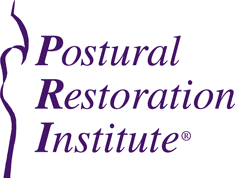Image from strengthontherun.com
Almost everyone who is in pain has tried some sort of soft and/or connective tissue mobilization to feel better. And for a large majority of those people, the result is the same. Typically, they’ll feel better for a short amount of time, but their original pain or tightness always returns. This can be quite frustrating and expensive as people have to consistently return to their chiropractor, physical therapist, and/or massage therapist to feel better even if it only lasts a short amount of time.
Why is this the case? Soft tissues (ie muscles) and connective tissue (ie fasia) do not simply develop knots, trigger points, or limitations in mobility and range of motion for no reason. Typically, a person will move their body differently over time for a myriad of reasons ranging from injury, surgery, and even psychosocial issues such as a tall middle school-aged girl that develops a slouched posture in order to appear shorter. No matter the reason, when we begin to move slightly differently than how the body was designed, we develop compensation patterns. These patterns will always results in under-mobilized and over-mobilized areas of the body as well as under-active and over-active muscles. Essentially, the body loses its balance.
Soft and connective tissue interventions help to restore the balance of our tissues, but they do not address the compensatory strategies that lead us to develop these issues in the first place. In fact, if the mechanics driving the dysfunction are not addressed, soft and connective tissue interventions can actually lead to more dyfunction down the road.
So if you’re interested in fully healing your pain and getting rid of it for good, be sure that your healthcare provider or team of healthcare providers are addressing what’s driving the muscle tightness or fascial immobility. At Integrate 360 Physical Therapy, fixing the problem is always our goal. Of course, we have techniques and machinery that will help us to relax muscles or decrease pain, but the heart of our rehab program is always correcting the mechanics. Additionally, we look at the entire human body to identify and treat any area that is not functioning properly, not just around the area of pain.
Set up your evaluation today and truly heal your body by calling us at 314-733-5000 or email lesley@integrate360pt.com or nancy@integrate360pt.com today!









